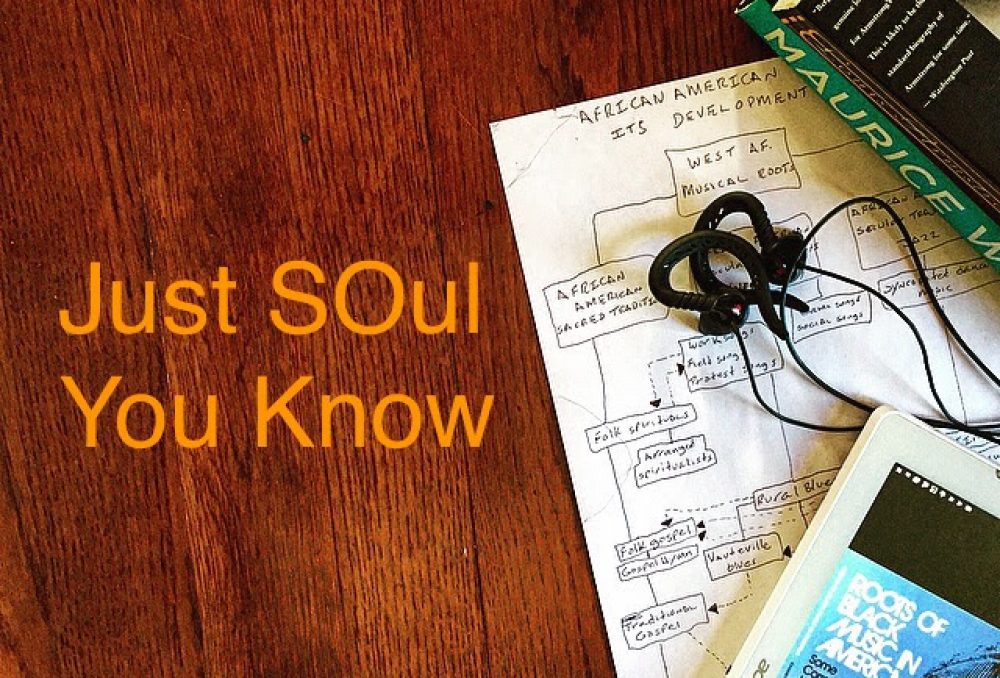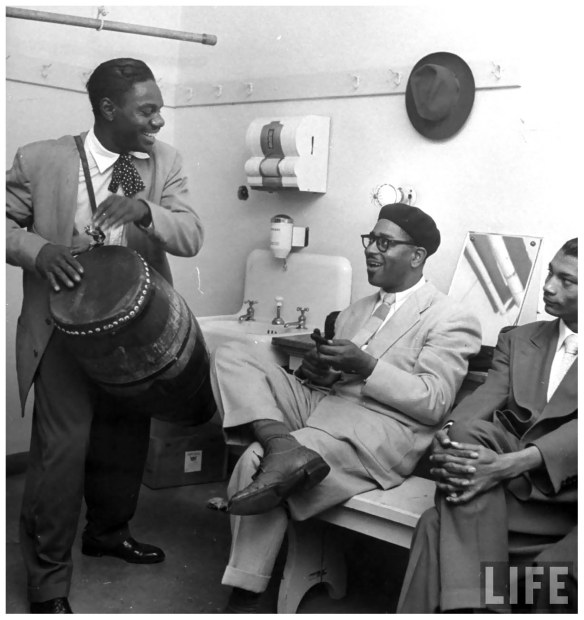By the time Lucian Pozo González or Chano Pozo, as he was better known, met Dizzy Gillespie in small New York apartment in 1947, he was already a musical force to be reckoned with. Chano grew up in poverty in Havana Cuba. At a young age he learned the ways of the streets and violent survival tactics. While negotiating a life on the Havana streets, he learned how to play the drums. He soon began to stand out as the best rumbero (street drummer) in Havana. He’d play for Afro-Cuban religious ceremonies where the drum was an integral part of worship–drums were an African cultural retention that survived the Maafa and enslavement in the Caribbean. Enslaved Africans were not allowed to utilize drums on American soil and thus a critical piece of African culture was lost to Africans in America. Chano became the featured drummer in nightclubs and the Carnival. In 1942 at the age of 27, frustrated with the ongoing hostile political environment in Cuba and in search of a more fulfilling life, Chano migrated to America. Chano quickly made his way to Chicago were for 5 years he worked odd jobs and as a rumbero for Latin clubs and Latin dance groups. In an attempt to gain more opportunities in music he move to New York in 1947. There he met and worked with Latin bandleader Mario Bauzá. Bauzá who was good friends with Gillespie introduced Pozo to Gillespie after the famed trumpeter wanted to add a congero to his band.
The day Chano met Gillespie in New York, in 1947 became one of the most pivotal moments in Jazz history. This meeting gave birth to a new genre of music called Latin/Afro-Cuban Jazz. Latin Jazz artist Chucho Valdés celebrates the creation of the genre as he says, “It’s amazing. Latin Jazz was born in New York with Mario Bauzá, Chano Pozo, Dizzy Gillespie, and others. It was called Afro-Cuban because they added Afro-Cuban drums into Dizzy’s band. It was a fusion of many elements.” Although some Latin artist certainly experimented with intersecting Jazz tunes with Afro-Cuban rhythms and vise versa such as Bauzá’s “Tanga”; however, Dizzy and Chano truly integrated the music forms of swing and Be Bop Jazz with Afro-Cuban clave rhythms to an artistic level. Chano was responsible for teaching Afro-Cuban rhythms to Gillespie (in Spanish, Chano did not speak English) and in turn, because of Gillespie’s national and global popularity, he was able to introduce Afro-Cuban Jazz to a broader audience than Mario Bauzá could ever have. Sadly, Chano Pozo was killed a year after meeting Dizzy Gillespie and did not fully realize his contribution to Jazz and Black music in general.
The meeting of Chano Pozo and Dizzy Gillespie by proxy ceremoniously rejoined the descendents of enslaved Africans in America with the lost art of drumming. Critical African rhythm was joined with uniquely African-American chords, melody, improvisation, and ‘call and response’ to create Afro-Cuban Jazz. Afro-Cuban is Jazz and Jazz is Black music. Happy Black Music Month!
Check out Dizzy as he speaks about Chano Pozo, it’s amazing! Then listen to “Manteca” co-written by Chano Pozo who is playing the congas:

